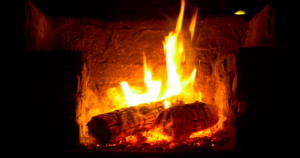One of the things about British weather, especially in winter, is that it is predictably unpredictable. In that respect we can be certain that if we have not had bad weather for a  couple of years, we will get it and it will come out of the blue. Previously we advised social care providers, including home care and care homes, that it was a good time to start to plan for the winter contingencies, https://www.careis.net/why-you-need-to-get-ready-for-winter-now/.
couple of years, we will get it and it will come out of the blue. Previously we advised social care providers, including home care and care homes, that it was a good time to start to plan for the winter contingencies, https://www.careis.net/why-you-need-to-get-ready-for-winter-now/.
Of course it may seem like it is too late to put in place any plans to manage the snowy and icy conditions now, but in fact, now, as winter sets in, is a good time to remind your self and staff of the various things to look out for among the people that you care for as well as how to behave and what to do in order to keep them safe from winter harm.
In our extreme weather policy, which cover winter, https://www.careis.net/features/, you will find guidance about not only what to look for as signs and symptoms that a service user is getting cold, but also some ideas about how to beat the cold by keeping the service and service users warm. Much of what is in the policy is reflected in the guidance which government and local authorities will be sharing as we enter this week of extreme winter cold throughout the whole of the UK.
 Key among the advice to social care business owners and registered managers from the government is to ensure the staff team know what to look out for among at-risk clients, https://www.gov.uk/government/publications/cold-weather-and-health-supporting-vulnerable-people/supporting-vulnerable-people-before-and-during-cold-weather-healthcare-professionals.
Key among the advice to social care business owners and registered managers from the government is to ensure the staff team know what to look out for among at-risk clients, https://www.gov.uk/government/publications/cold-weather-and-health-supporting-vulnerable-people/supporting-vulnerable-people-before-and-during-cold-weather-healthcare-professionals.
Such communication includes reminding domiciliary carers, to ensure daily contact with at risk individuals and ensuring that staff are undertaking appropriate home checks when visiting clients, for example room temperature, medications and food supplies.
This may seem obvious, but when the weather deteriorates rapidly, as it did for much of southeastern England on the 11th of December, then it may mean that some at risk individuals will be left isolated for several hours, or even days. This may mean they have limited access to food and warmth.
Notably, one of the increasingly clear messages regarding the effects of cold suggests that temperatures of less that 18oC for sustained periods of time put the health of the elderly and more vulnerable members of society at risk.
Background heating in care settings should be set at a minimum of 18oC even at night to help prevent hypothermia and complications arising from respiratory and cardiac disease.
Care staff should check more regularly on vulnerable residents, for example, people living with dementia may not understand the need to pull their duvet or blankets back over themselves and as a result may be at risk of becoming dangerously cold even in a short space of time.
Care home residents should also be encouraged to move about during the day to generate heat and stay warm, with activity coordinators perhaps doing more activities like music and movement designed to improve circulation and keep people warm. Of course, cold weather is a good excuse for the winter menu to be out in full force, with warming and hearty soups, casseroles and other seasonal treats served up in an attempt to help people keep warm.
more activities like music and movement designed to improve circulation and keep people warm. Of course, cold weather is a good excuse for the winter menu to be out in full force, with warming and hearty soups, casseroles and other seasonal treats served up in an attempt to help people keep warm.
Similarly, it is important to offer older people and those at risk this winter regular hot drinks throughout the day as this help to keep them warm and prevents dehydration.
While heating premises is important in helping people stay warm, so is dressing appropriately for the weather, this means layers. The advice from experts is that multiple layers of clothing are better that one think layer. Each layer of clothing traps in air which is them warmed providing insulation for the wearer, so while the temptation is for the Christmas woolly, this needs to be accompanied by two or three thin layers underneath to trap said air.
Some good housekeeping also helps with the cold, for example, pulling curtains at night to help keep the building warm and ensuring that radiators have been bled and and are full of water and not air. Ensuring windows are closed and draft exclusion is in place to keep the winter cold outside where it belongs.
Whatever you do this winter it is important to keep safe and keep warm, ensure as a social care provider, you are getting updates from your local resilience networks and ask for help if you need it.
